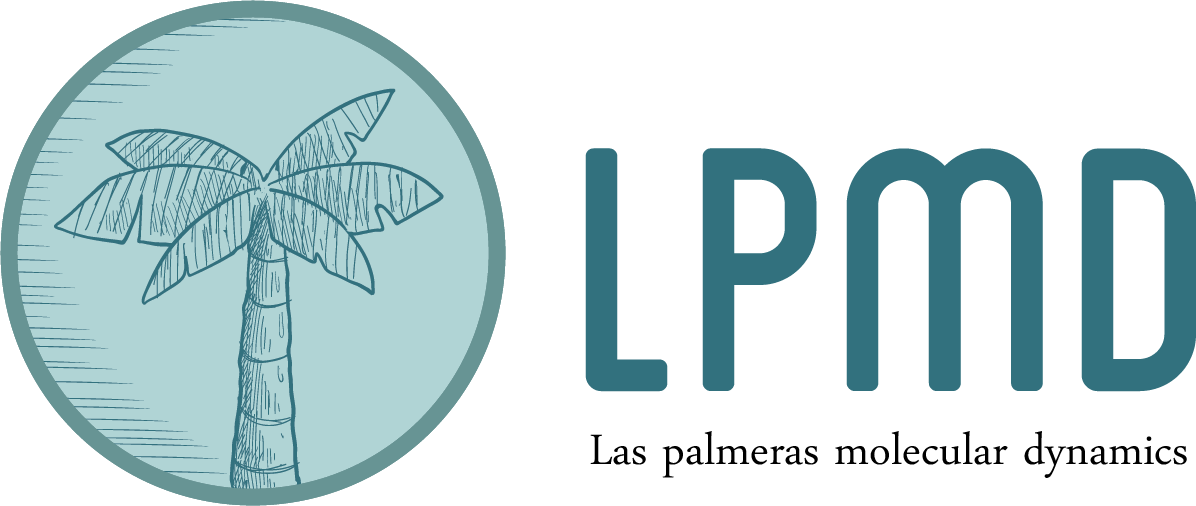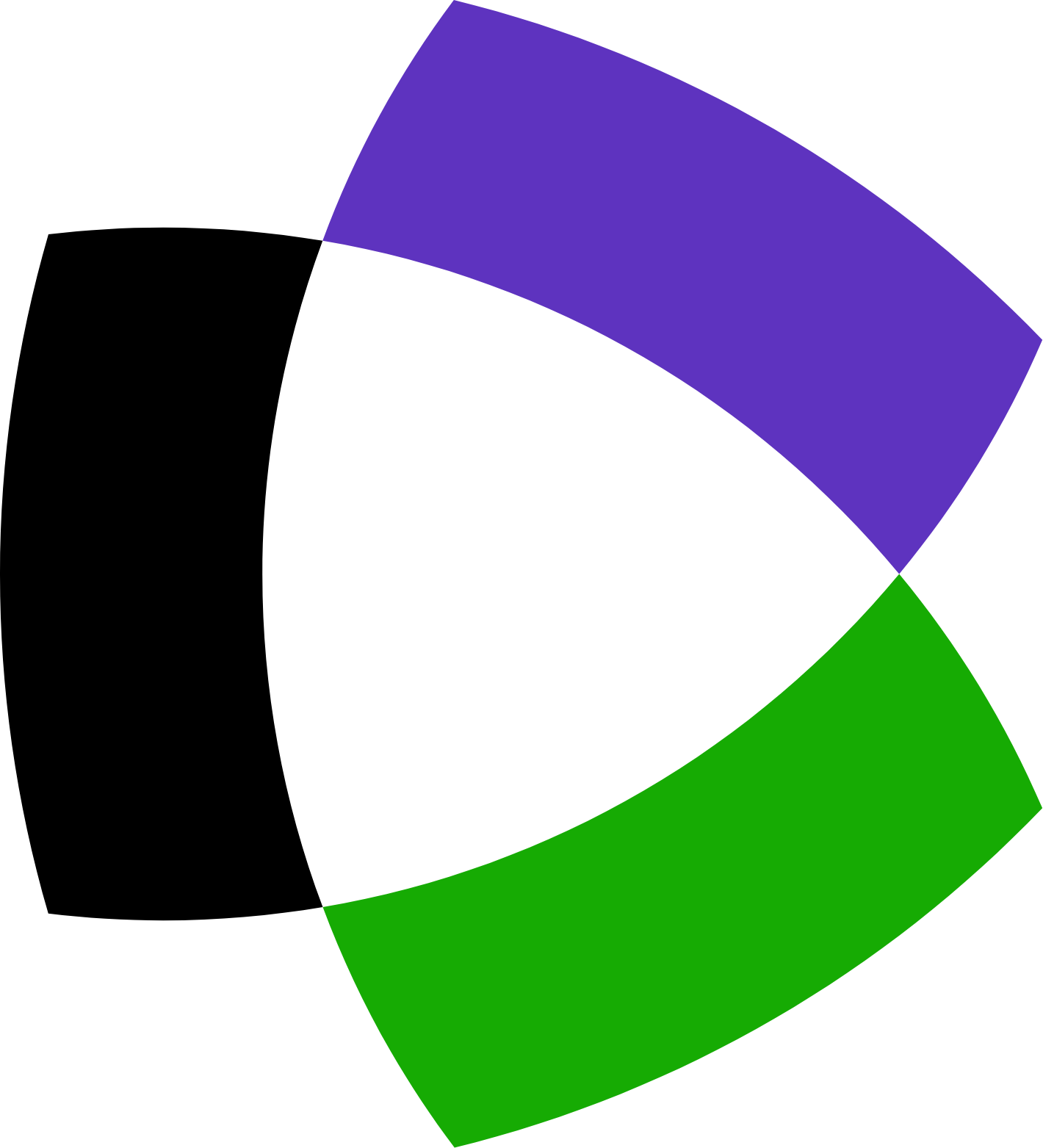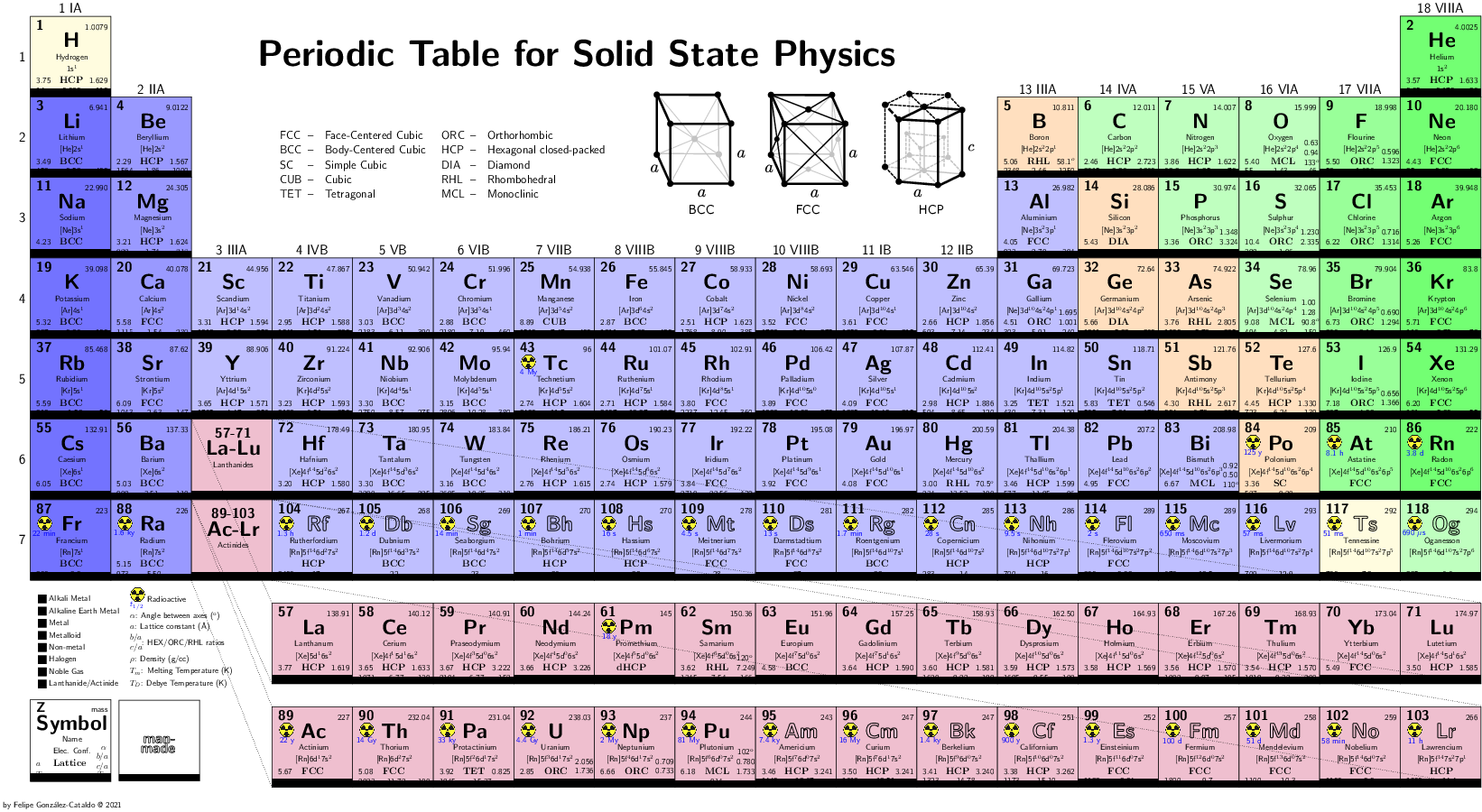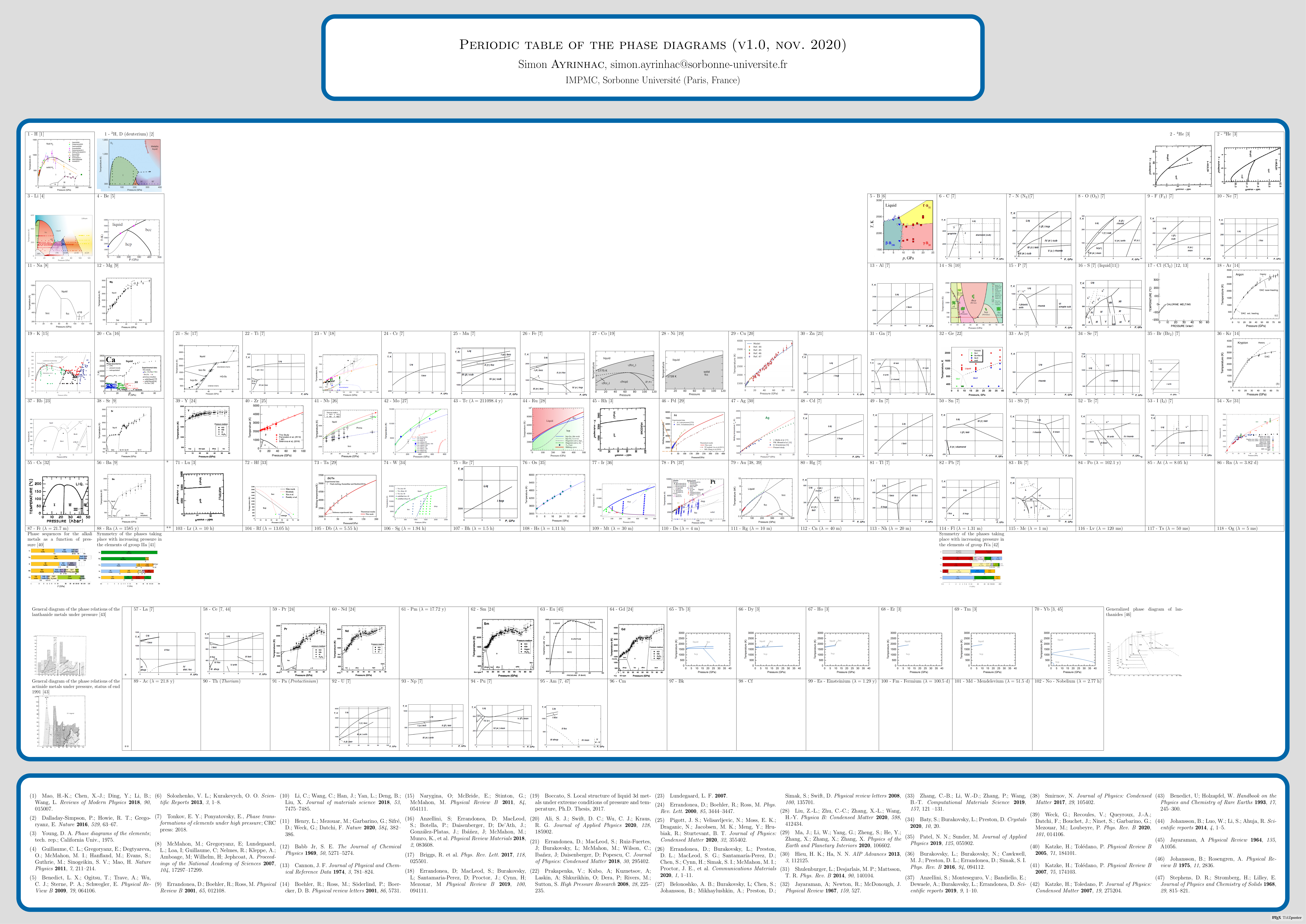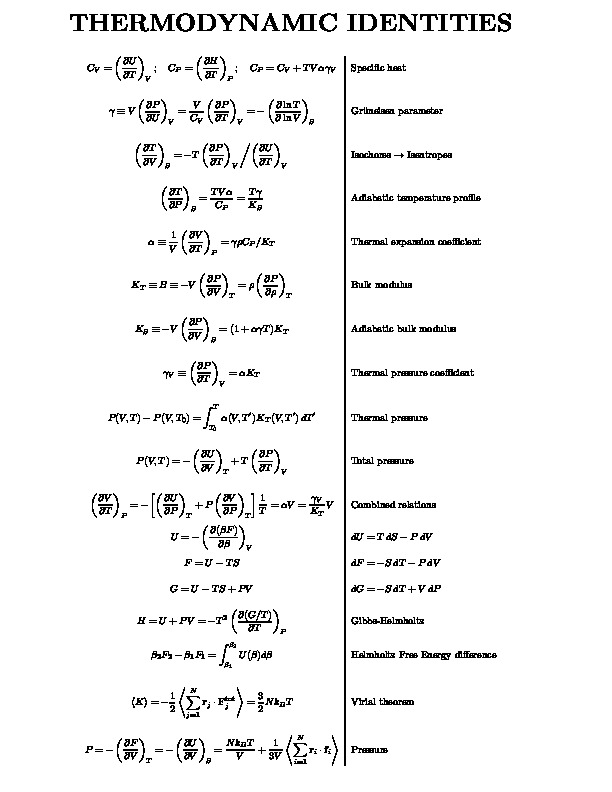Programas
Vector Fields
Have you ever wondered how does an electromagnetic field looks like? How signals propagates from satellites to your cellphone? Or maybe what is the form of a radiowave emmited from your favorite radio station? Here I present you a way to visualize how electric fields propagate.
Code (C++)
//**************************************************************//
//* VECTOR FIELDS *//
//* *//
//* This program shows how different vector fields propagate. *//
//* The program draws a vector field of the form //
//* E(r) = E(r)e^{i(k*r-w*t)}, //
//* where r=(x,y,z) and k=(kx,ky,kz) //
//*************************************************************//
// AUTHOR: FELIPE GONZALEZ CATALDO, December 2012.
//--------------------------------------------------//
//--------------------------------------------------//
#include <GL/glut.h>
#include <iostream>
#include <cmath>
#define ESCAPE 27
unsigned char Buttons[3] = {0};
int mousecoord[2];
int win_width=800, win_height=600;
float ancho=50.0, alto=50.0;
float diagonal=sqrt(ancho*ancho+alto*alto);
float dist=diagonal;
float fovy;
float near, far;
float eye[3], center[3], up[3];
float v[3], diag[3], camdir[3];
float tx = 0;
float ty = 0;
bool paused=false;
GLuint unitID, vecfieldID;
float dt=0.001;
float t=0;
int NumXArrows=50;
int NumYArrows=50;
int NumZArrows=1;
float norm=0.8;
float lambda=10;
float w=300;
float kx(float x, float y, float z){ return (2*M_PI/lambda)*x/sqrt(x*x+y*y);}
float ky(float x, float y, float z){ return (2*M_PI/lambda)*y/sqrt(x*x+y*y);}
float kz(float x, float y, float z){ return 0.0;}
float Ex(float x, float y, float z){ return 0.0; }
float Ey(float x, float y, float z){ return 0.0; }
float Ez(float x, float y, float z){ return 1.0; }
//------------------------------- SolidCylinder ------------------------------//
// Draw a cone of radii r and height h
void SolidCylinder(float r, float h)
{
float vtx=4;
glBegin(GL_POLYGON);
for (int n=0; n<=vtx; n++) glVertex3d(r*cos(2*M_PI*n/vtx),r*sin(2*M_PI*n/vtx),0);
glEnd();
glBegin(GL_POLYGON);
for (int n=0; n<vtx; n++)
{
glVertex3d(r*cos(2*M_PI*n/vtx),r*sin(2*M_PI*n/vtx),0);
glVertex3d(r*cos(2*M_PI*(n+1)/vtx),r*sin(2*M_PI*(n+1)/vtx),0);
glVertex3d(r*cos(2*M_PI*(n+1)/vtx),r*sin(2*M_PI*(n+1)/vtx),h);
glVertex3d(r*cos(2*M_PI*n/vtx),r*sin(2*M_PI*n/vtx),h);
glVertex3d(r*cos(2*M_PI*n/vtx),r*sin(2*M_PI*n/vtx),0);
}
glEnd();
}
//------------------------------- SolidCone ------------------------------//
// Draw a cone of radii r and height h
void SolidCone(float r, float h)
{
float vtx=4;
glBegin(GL_POLYGON);
for (int n=0; n<=vtx; n++) glVertex3d(r*cos(2*M_PI*n/vtx),r*sin(2*M_PI*n/vtx),0);
glEnd();
glBegin(GL_POLYGON);
for (int n=0; n<vtx; n++)
{
glVertex3d(r*cos(2*M_PI*n/vtx),r*sin(2*M_PI*n/vtx),0);
glVertex3d(r*cos(2*M_PI*(n+1)/vtx),r*sin(2*M_PI*(n+1)/vtx),0);
glVertex3d(0,0,h);
glVertex3d(r*cos(2*M_PI*n/vtx),r*sin(2*M_PI*n/vtx),0);
}
glEnd();
}
//------------------------------ Unitary Vector ------------------------------//
void MakeUnitZ(GLuint id)
{
float r=diagonal/1000;
glNewList(id,GL_COMPILE);
glPushMatrix();
SolidCylinder(r,1); // Cilindro
// glBegin(GL_LINES); glVertex3f(0,0,0); glVertex3f(0,0,1); glEnd(); // Linea simple
glPopMatrix();
glEndList();
}
//------------------------------ General Vector ------------------------------//
void flecha(float x, float y, float z)
{
float L=x*x+y*y+z*z;
L=sqrt(L);
float r=diagonal/1000;
glPushMatrix();
float angle=acos(z/L)*180/M_PI;
// Rotamos el cilindro alargado (0,0,L) un angulo
// (-angle) en torno al eje (x,y,z)X(0,0,L)=(L*y,-L*x,0)=(ejex,ejey,ejez)
float ejex=L*y, ejey=-L*x, ejez=0;
if (fabs(L*y)<0.001 && fabs(L*x)<0.001) ejex=1; //Soluciona el caso eje=(0,0,0)
glRotated(-angle, ejex, ejey, ejez);
glPushMatrix();
// 'Cilindro'
glPushMatrix();
glScalef(1,1,L); glCallList(unitID); // Cilindro agrandado
glPopMatrix();
// 'Gorrito'
glTranslated(0,0,L);
SolidCone(2*r,0.1*L);
// glutSolidCone(2*r,4*r,4,4);
glPopMatrix();
glPopMatrix();
}
//****************************************************************************//
//------------------------------ Vector Field --------------------------------//
//****************************************************************************//
void MakeVectorField(GLuint id)
{
glNewList(id,GL_COMPILE);
int counter=0;
for (float z=0; z<ancho/4; z+=(ancho/4)/NumZArrows)
{
for (float y=-alto/2; y<alto/2; y+=alto/NumYArrows)
{
for (float x=-ancho/2; x<ancho/2; x+=ancho/NumXArrows)
{
glPushMatrix();
glTranslatef(x,y,z);
glColor3f(1,1,0);
if (Ez(x,y,z)*cos(kx(x,y,z)*x+ky(x,y,z)*y+kz(x,y,z)*z-w*t)<0) glColor3f(1,1,0);
else glColor3f(1,0,0);
counter++;
flecha(
Ex(x,y,z)*cos(kx(x,y,z)*x+ky(x,y,z)*y+kz(x,y,z)*z-w*t)/norm,
Ey(x,y,z)*cos(kx(x,y,z)*x+ky(x,y,z)*y+kz(x,y,z)*z-w*t)/norm,
Ez(x,y,z)*cos(kx(x,y,z)*x+ky(x,y,z)*y+kz(x,y,z)*z-w*t)/norm);
// glColor3f(0,0,1);
// flecha(kx(x,y,z),ky(x,y,z),kz(x,y,z));
glPopMatrix();
}
}
}
glEndList();
// std::cout << "Conte " << counter << " flechas\n";
}
//----------------------------------------------------------------------------//
//--------------------------- RotateVector -----------------------------------//
// It is used to rotate the camera in the "MoveCamera" function
// Method taken from http://inside.mines.edu/~gmurray/ArbitraryAxisRotation/
void RotateVector(float * vect, float * axis, float ang)
{
float u=axis[0],v=axis[1],w=axis[2];
float x=vect[0],y=vect[1],z=vect[2];
float norm2=u*u+v*v+w*w;
float rv[3];
rv[0] = u*(u*x+v*y+w*z)+(x*(v*v+w*w)-u*(v*y+w*z))*cos(ang)+sqrt(u*u+v*v+w*w)*(-w*y+v*z)*sin(ang);
rv[1] = v*(u*x+v*y+w*z)+(y*(u*u+w*w)-v*(u*x+w*z))*cos(ang)+sqrt(u*u+v*v+w*w)*(w*x-u*z)*sin(ang);
rv[2] = w*(u*x+v*y+w*z)+(z*(u*u+v*v)-w*(u*x+v*y))*cos(ang)+sqrt(u*u+v*v+w*w)*(-v*x+u*y)*sin(ang);
for (int q=0; q<3; ++q) vect[q]=rv[q]/norm2;
}
//------------------------------------- SetCamera ----------------------------//
// This function will be used in any function that involves a camera movement
void SetCamera(float distance)
{
for (int q=0;q<3;++q) center[q] = 0+tx*v[q]+ty*up[q];//0.5*diag[q] + tx*v[q] + ty*up[q];
for (int q=0;q<3;++q) eye[q] = center[q] + distance*camdir[q];
far=4*fabs(distance);
near=0.5*fabs(distance);
}
void SetCamera(float theta, float phi)
{
// 'camdir' is the unitary vector that points from the center of the cell towards the camera
camdir[0] = sin(theta)*cos(phi);
camdir[1] = sin(theta)*sin(phi);
camdir[2] = cos(theta);
float phz = 0.5*M_PI;
// 'v' is a 90° rotation of the vector 'camdir' (adding 0.5*M_PI to the "theta" angle in spherical coordinates) along the plane phi=const.
v[0] = sin(theta+phz)*cos(phi);
v[1] = sin(theta+phz)*sin(phi);
v[2] = cos(theta+phz);
// 'up'='camdir'x'v' vector indicates which direction is up (the direction from the bottom to the top of the viewing volume)
up[0] = camdir[1]*v[2] - camdir[2]*v[1];
up[1] = camdir[2]*v[0] - camdir[0]*v[2];
up[2] = camdir[0]*v[1] - camdir[1]*v[0];
// Set the far-clip (perspetive mode) always beyond the objects
far=4*fabs(dist);
SetCamera(dist);
}
//------------------------------- MoveCamera ---------------------------------//
void MoveCamera(float angx, float angy)
{
float rotx = M_PI*angx/180.0;
float roty = M_PI*angy/180.0;
float horiz[3];
// 'horiz'='up'x'camdir'='v'
horiz[0] = up[1]*camdir[2] - up[2]*camdir[1];
horiz[1] = up[2]*camdir[0] - up[0]*camdir[2];
horiz[2] = up[0]*camdir[1] - up[1]*camdir[0];
RotateVector(camdir, horiz, roty);
RotateVector(camdir, up, rotx);
RotateVector(v, horiz, roty);
RotateVector(v, up, rotx);
// 'up'='camdir'x'v'
up[0] = camdir[1]*v[2] - camdir[2]*v[1];
up[1] = camdir[2]*v[0] - camdir[0]*v[2];
up[2] = camdir[0]*v[1] - camdir[1]*v[0];
SetCamera(dist);
}
//----------------------------- Init -----------------------------------------//
void Init(int argc, char** argv)
{
GLfloat light_diffuse[] = {1.0, 1.0, 1.0, 1.0};
GLfloat light_position[] = { 0, 0, -1, 0};
GLfloat light_position1[] = {0, 0, 1, 0};
GLfloat mat_specular[] = { 1.0, 1.0, 1.0, 1.0 };
GLfloat mat_shininess[] = { 50.0 };
glShadeModel (GL_SMOOTH);
/* Define normal light */
glLightfv(GL_LIGHT0,GL_DIFFUSE,light_diffuse);
glLightfv(GL_LIGHT1,GL_DIFFUSE,light_diffuse);
glLightfv(GL_LIGHT0,GL_POSITION,light_position);
glLightfv(GL_LIGHT1,GL_POSITION,light_position1);
/* Define material of objects */
glMaterialfv(GL_FRONT_AND_BACK, GL_SPECULAR, mat_specular);
glMaterialfv(GL_FRONT_AND_BACK, GL_SHININESS, mat_shininess);
/* Enable a single OpenGL light */
glEnable(GL_LIGHTING);
glEnable(GL_LIGHT0);
glEnable(GL_LIGHT1);
/* Use depth buffering for hidden surface elimination */
glEnable(GL_DEPTH_TEST);
/* Enable the color material mode */
glEnable(GL_COLOR_MATERIAL);
/* Don't mess up the lighting equations */
glEnable(GL_NORMALIZE);
near=0.5*diagonal;
far=2*diagonal;
fovy = (GLfloat)( 0.5*alto/(2*near) );
fovy = (GLfloat)( 2*atan((float)fovy)/M_PI*180.0 ); // Field of view touches exactly the borders of the cell
fovy = (GLfloat)( 1.2*fovy); // We open the field of view a little bit more.
for (int q=0; q<3; q++) diag[q]=0.5*(alto+ancho);
double theta=0, phi=0;
camdir[0] = sin(theta)*cos(phi);
camdir[1] = sin(theta)*sin(phi);
camdir[2] = cos(theta);
float phz = 0.5*M_PI;
/* Set 'v', a 90° rotation of the vector 'camdir' (adding 0.5*M_PI to the "theta" angle in spherical coordinates) along the plane phi=const. */
v[0] = sin(theta+phz)*cos(phi);
v[1] = sin(theta+phz)*sin(phi);
v[2] = cos(theta+phz);
/* Set 'up'='camdir'x'v' vector, that indicates which direction is up (the direction from the bottom to the top of the viewing volume) */
up[0] = camdir[1]*v[2] - camdir[2]*v[1];
up[1] = camdir[2]*v[0] - camdir[0]*v[2];
up[2] = camdir[0]*v[1] - camdir[1]*v[0];
float cm = 0.0;
for (int q=0;q<3;++q) cm += up[q]*up[q];
for (int q=0;q<3;++q) up[q] /= sqrt(cm);
/* SetCamera(distance) or SetCamera(orth_distance) */
MoveCamera(0,20);
/* Make the a unitary vector un z direction */
unitID = glGenLists(1);
MakeUnitZ(unitID);
/* Make the whole vector field */
vecfieldID = glGenLists(1);
MakeVectorField(vecfieldID);
}
//----------------------------- Reshape ---------------------------------------//
void Reshape(int w, int h)
{
win_width=w;
win_height=h;
// set the GL viewport to match the full size of the window
glViewport(0, 0, (GLsizei)w, (GLsizei)h);
float aspect = w/(float)h;
glMatrixMode(GL_PROJECTION);
glLoadIdentity();
// we math the aspect ratio (w/h) with the viewport ratio in both perspectives
gluPerspective(fovy,aspect,near,far);
glMatrixMode(GL_MODELVIEW);
glLoadIdentity();
}
//----------------------------- Mouse ---------------------------------------//
void Mouse(int button,int state,int x,int y){
mousecoord[0] = x;
mousecoord[1] = y;
switch(button)
{
case GLUT_LEFT_BUTTON:
Buttons[0] = ((GLUT_DOWN==state)?1:0);
break;
case GLUT_MIDDLE_BUTTON:
Buttons[1] = ((GLUT_DOWN==state)?1:0);
break;
case GLUT_RIGHT_BUTTON:
Buttons[2] = ((GLUT_DOWN==state)?1:0);
break;
default:
break;
}
mousecoord[0] = x;
mousecoord[1] = y;
glutPostRedisplay();
}
//----------------------------- Mouse Motion ---------------------------------//
void MouseMotion(int x,int y){
// drag and drop
int dx = x-mousecoord[0];
int dy = y-mousecoord[1];
mousecoord[0] = x;
mousecoord[1] = y;
if( Buttons[1] ) // Boton del centro (scroll)
{
dist -= (float) 1.1f * dx;
MoveCamera(0,0);
}
else if( Buttons[0] ) // Boton izquierdo
{
if (sqrt(dx*dx+dy*dy) < 0.2) return;
MoveCamera(-0.5*dx,-0.5*dy);
}
else if( Buttons[2] ) // Boton derecho
{
tx -= (float) 0.1f * dx;
ty += (float) 0.1f * dy;
MoveCamera(0,0);
}
Reshape(win_width,win_height);
glutPostRedisplay();
}
//----------------------------- Keyboard -------------------------------------//
void Keyboard(unsigned char key, int x, int y){
switch (key)
{
case ESCAPE: exit(0);
case 'q': exit(0);
break;
case 'a':
{
tx=0; ty=0;
dist=1.1*alto/(2*tan(M_PI/8));
SetCamera(0,0);
glutPostRedisplay();
}
break;
case 'p':
case ' ':
{
paused = !paused;
}
}
}
//----------------------------- Draw -----------------------------------------//
void Draw(void){
// glClearColor(1,1,1,1);
glClear(GL_COLOR_BUFFER_BIT|GL_DEPTH_BUFFER_BIT);
glLoadIdentity();
glPushMatrix();
gluLookAt(
(GLfloat)eye[0],(GLfloat)eye[1],(GLfloat)eye[2],
(GLfloat)center[0],(GLfloat)center[1],(GLfloat)center[2],
(GLfloat)up[0],(GLfloat)up[1],(GLfloat)up[2]);
glPushMatrix();
glCallList(vecfieldID);
glColor3f(0,1,0);
glBegin(GL_LINES);
for(float i=-ancho/2;i<=ancho/2;i+=5){ glVertex3f(i,-alto/2,0); glVertex3f(i,alto/2,0);}
for(float i=-alto/2; i<=alto/2; i+=5){ glVertex3f(ancho/2,i,0); glVertex3f(-ancho/2,i,0);}
glEnd();
glColor3f(1,1,1);
glPopMatrix();
glPushMatrix();
glScaled(5,5,5);
flecha(1,0,0);
flecha(0,1,0);
flecha(0,0,1);
glPopMatrix();
glPopMatrix();
glutPostRedisplay();
glutSwapBuffers(); // Intercambia los buffers para impedir el parpadeo.
}
void idle(void)
{
if(!paused){t+=dt; MakeVectorField(vecfieldID);}
}
int main(int argc, char** argv)
{
for (int op=0; op<argc; op++)
{
std::string sw=argv[op];
if (sw=="-h")
{
std::cout << "-> INFORMATION: \n";
std::cout << " This program can animate any vector field with the form \n";
std::cout << " E(r)=E0(r)cos(kr-wt) \n";
std::cout << " where r=(x,y,z), k=(kx,ky,kz) and E0=(E0x,E0y,E0z). \n";
std::cout << " Each component of k and E0 can depend on space and time,\n";
std::cout << " writting them in cartesian coordinates. \n";
std::cout << " You have the freedom to distribute copies of this free \n";
std::cout << " software (and change it if you wish). For more information\n";
std::cout << " contact me to fgonzalez@lpmd.cl \n\n";
std::cout << "-> SYNOPSIS: \n";
std::cout << " Replace the piece of code necessary to configure your \n";
std::cout << " vector field (see examples) and compile the program with\n\n";
std::cout << " g++ -Wall -o newfield vector-fields.cc -lglut -lGLU\n\n";
std::cout << " 'a' : Restores visualization. \n";
std::cout << " 'q' : Closes program. \n";
std::cout << " 'p' or ' ' : Play/stops the animation. \n";
std::cout << " MOUSE_LEFT_BUTTON : Rotate de scene. \n";
std::cout << " MOUSE_MIDDLE_BUTTON: Zoom to the scene. \n";
std::cout << " MOUSE_RIGHT_BUTTON : Translate the scene. \n\n";
std::cout << "-> INSTALL REQUIRED SOFTWARE: \n";
std::cout << " apt-get install mesa-utils \n";
std::cout << " apt-get install libglut3-dev \n\n";
std::cout << "-> EXAMPLE: \n";
std::cout << " This piece of code corresponds to a plane wave polarized\n";
std::cout << " in Z-direction, travelling in the direction (1,1,0): \n\n";
std::cout << " int NumXArrows=50; \n";
std::cout << " int NumYArrows=50; \n";
std::cout << " int NumZArrows=1; \n";
std::cout << " float norm=0.8; \n";
std::cout << " float lambda=10; \n";
std::cout << " float w=300; \n";
std::cout << " float kx(float x, float y, float z){ return (2*M_PI/lambda)/sqrt(2);}\n";
std::cout << " float ky(float x, float y, float z){ return (2*M_PI/lambda)/sqrt(2);}\n";
std::cout << " float kz(float x, float y, float z){ return 0;} \n";
std::cout << " float Ex(float x, float y, float z){ return 0; } \n";
std::cout << " float Ey(float x, float y, float z){ return 0; } \n";
std::cout << " float Ez(float x, float y, float z){ return 1; } \n\n";
std::cout << " The first 3 lines fix the number of arrows in each \n";
std::cout << " direction. In this case, you will have 50x50x1=2500 \n";
std::cout << " arrows in the simulation. 'norm' is a normalizer factor \n";
std::cout << " to keep arrows not so large, not so short. 'lambda' is \n";
std::cout << " the wave length, and 'w' the frequency. 'kx', ky' and 'kz'\n";
std::cout << " are the componentes of the wave vector k, while 'Ex', 'Ey'\n";
std::cout << " and 'Ez' are the componentes of E0. \n\n\n";
std::cout << "Felipe Gonzalez Cataldo. \n";
std::cout << "July 2011. \n";
exit(0);
}
}
glutInit(&argc, argv);
glutInitDisplayMode(GLUT_DOUBLE | GLUT_RGBA | GLUT_DEPTH);
glutInitWindowSize(win_width,win_height);
glutInitWindowPosition(0, 150);
glutCreateWindow("Campos Vectoriales");
Init(argc,argv);
glutDisplayFunc(Draw);
glutKeyboardFunc(Keyboard);
glutReshapeFunc(Reshape);
glutMotionFunc(MouseMotion);
glutMouseFunc(Mouse);
glutIdleFunc(idle);
glutMainLoop();
return 0;
}
//* VECTOR FIELDS *//
//* *//
//* This program shows how different vector fields propagate. *//
//* The program draws a vector field of the form //
//* E(r) = E(r)e^{i(k*r-w*t)}, //
//* where r=(x,y,z) and k=(kx,ky,kz) //
//*************************************************************//
// AUTHOR: FELIPE GONZALEZ CATALDO, December 2012.
//--------------------------------------------------//
//--------------------------------------------------//
#include <GL/glut.h>
#include <iostream>
#include <cmath>
#define ESCAPE 27
unsigned char Buttons[3] = {0};
int mousecoord[2];
int win_width=800, win_height=600;
float ancho=50.0, alto=50.0;
float diagonal=sqrt(ancho*ancho+alto*alto);
float dist=diagonal;
float fovy;
float near, far;
float eye[3], center[3], up[3];
float v[3], diag[3], camdir[3];
float tx = 0;
float ty = 0;
bool paused=false;
GLuint unitID, vecfieldID;
float dt=0.001;
float t=0;
int NumXArrows=50;
int NumYArrows=50;
int NumZArrows=1;
float norm=0.8;
float lambda=10;
float w=300;
float kx(float x, float y, float z){ return (2*M_PI/lambda)*x/sqrt(x*x+y*y);}
float ky(float x, float y, float z){ return (2*M_PI/lambda)*y/sqrt(x*x+y*y);}
float kz(float x, float y, float z){ return 0.0;}
float Ex(float x, float y, float z){ return 0.0; }
float Ey(float x, float y, float z){ return 0.0; }
float Ez(float x, float y, float z){ return 1.0; }
//------------------------------- SolidCylinder ------------------------------//
// Draw a cone of radii r and height h
void SolidCylinder(float r, float h)
{
float vtx=4;
glBegin(GL_POLYGON);
for (int n=0; n<=vtx; n++) glVertex3d(r*cos(2*M_PI*n/vtx),r*sin(2*M_PI*n/vtx),0);
glEnd();
glBegin(GL_POLYGON);
for (int n=0; n<vtx; n++)
{
glVertex3d(r*cos(2*M_PI*n/vtx),r*sin(2*M_PI*n/vtx),0);
glVertex3d(r*cos(2*M_PI*(n+1)/vtx),r*sin(2*M_PI*(n+1)/vtx),0);
glVertex3d(r*cos(2*M_PI*(n+1)/vtx),r*sin(2*M_PI*(n+1)/vtx),h);
glVertex3d(r*cos(2*M_PI*n/vtx),r*sin(2*M_PI*n/vtx),h);
glVertex3d(r*cos(2*M_PI*n/vtx),r*sin(2*M_PI*n/vtx),0);
}
glEnd();
}
//------------------------------- SolidCone ------------------------------//
// Draw a cone of radii r and height h
void SolidCone(float r, float h)
{
float vtx=4;
glBegin(GL_POLYGON);
for (int n=0; n<=vtx; n++) glVertex3d(r*cos(2*M_PI*n/vtx),r*sin(2*M_PI*n/vtx),0);
glEnd();
glBegin(GL_POLYGON);
for (int n=0; n<vtx; n++)
{
glVertex3d(r*cos(2*M_PI*n/vtx),r*sin(2*M_PI*n/vtx),0);
glVertex3d(r*cos(2*M_PI*(n+1)/vtx),r*sin(2*M_PI*(n+1)/vtx),0);
glVertex3d(0,0,h);
glVertex3d(r*cos(2*M_PI*n/vtx),r*sin(2*M_PI*n/vtx),0);
}
glEnd();
}
//------------------------------ Unitary Vector ------------------------------//
void MakeUnitZ(GLuint id)
{
float r=diagonal/1000;
glNewList(id,GL_COMPILE);
glPushMatrix();
SolidCylinder(r,1); // Cilindro
// glBegin(GL_LINES); glVertex3f(0,0,0); glVertex3f(0,0,1); glEnd(); // Linea simple
glPopMatrix();
glEndList();
}
//------------------------------ General Vector ------------------------------//
void flecha(float x, float y, float z)
{
float L=x*x+y*y+z*z;
L=sqrt(L);
float r=diagonal/1000;
glPushMatrix();
float angle=acos(z/L)*180/M_PI;
// Rotamos el cilindro alargado (0,0,L) un angulo
// (-angle) en torno al eje (x,y,z)X(0,0,L)=(L*y,-L*x,0)=(ejex,ejey,ejez)
float ejex=L*y, ejey=-L*x, ejez=0;
if (fabs(L*y)<0.001 && fabs(L*x)<0.001) ejex=1; //Soluciona el caso eje=(0,0,0)
glRotated(-angle, ejex, ejey, ejez);
glPushMatrix();
// 'Cilindro'
glPushMatrix();
glScalef(1,1,L); glCallList(unitID); // Cilindro agrandado
glPopMatrix();
// 'Gorrito'
glTranslated(0,0,L);
SolidCone(2*r,0.1*L);
// glutSolidCone(2*r,4*r,4,4);
glPopMatrix();
glPopMatrix();
}
//****************************************************************************//
//------------------------------ Vector Field --------------------------------//
//****************************************************************************//
void MakeVectorField(GLuint id)
{
glNewList(id,GL_COMPILE);
int counter=0;
for (float z=0; z<ancho/4; z+=(ancho/4)/NumZArrows)
{
for (float y=-alto/2; y<alto/2; y+=alto/NumYArrows)
{
for (float x=-ancho/2; x<ancho/2; x+=ancho/NumXArrows)
{
glPushMatrix();
glTranslatef(x,y,z);
glColor3f(1,1,0);
if (Ez(x,y,z)*cos(kx(x,y,z)*x+ky(x,y,z)*y+kz(x,y,z)*z-w*t)<0) glColor3f(1,1,0);
else glColor3f(1,0,0);
counter++;
flecha(
Ex(x,y,z)*cos(kx(x,y,z)*x+ky(x,y,z)*y+kz(x,y,z)*z-w*t)/norm,
Ey(x,y,z)*cos(kx(x,y,z)*x+ky(x,y,z)*y+kz(x,y,z)*z-w*t)/norm,
Ez(x,y,z)*cos(kx(x,y,z)*x+ky(x,y,z)*y+kz(x,y,z)*z-w*t)/norm);
// glColor3f(0,0,1);
// flecha(kx(x,y,z),ky(x,y,z),kz(x,y,z));
glPopMatrix();
}
}
}
glEndList();
// std::cout << "Conte " << counter << " flechas\n";
}
//----------------------------------------------------------------------------//
//--------------------------- RotateVector -----------------------------------//
// It is used to rotate the camera in the "MoveCamera" function
// Method taken from http://inside.mines.edu/~gmurray/ArbitraryAxisRotation/
void RotateVector(float * vect, float * axis, float ang)
{
float u=axis[0],v=axis[1],w=axis[2];
float x=vect[0],y=vect[1],z=vect[2];
float norm2=u*u+v*v+w*w;
float rv[3];
rv[0] = u*(u*x+v*y+w*z)+(x*(v*v+w*w)-u*(v*y+w*z))*cos(ang)+sqrt(u*u+v*v+w*w)*(-w*y+v*z)*sin(ang);
rv[1] = v*(u*x+v*y+w*z)+(y*(u*u+w*w)-v*(u*x+w*z))*cos(ang)+sqrt(u*u+v*v+w*w)*(w*x-u*z)*sin(ang);
rv[2] = w*(u*x+v*y+w*z)+(z*(u*u+v*v)-w*(u*x+v*y))*cos(ang)+sqrt(u*u+v*v+w*w)*(-v*x+u*y)*sin(ang);
for (int q=0; q<3; ++q) vect[q]=rv[q]/norm2;
}
//------------------------------------- SetCamera ----------------------------//
// This function will be used in any function that involves a camera movement
void SetCamera(float distance)
{
for (int q=0;q<3;++q) center[q] = 0+tx*v[q]+ty*up[q];//0.5*diag[q] + tx*v[q] + ty*up[q];
for (int q=0;q<3;++q) eye[q] = center[q] + distance*camdir[q];
far=4*fabs(distance);
near=0.5*fabs(distance);
}
void SetCamera(float theta, float phi)
{
// 'camdir' is the unitary vector that points from the center of the cell towards the camera
camdir[0] = sin(theta)*cos(phi);
camdir[1] = sin(theta)*sin(phi);
camdir[2] = cos(theta);
float phz = 0.5*M_PI;
// 'v' is a 90° rotation of the vector 'camdir' (adding 0.5*M_PI to the "theta" angle in spherical coordinates) along the plane phi=const.
v[0] = sin(theta+phz)*cos(phi);
v[1] = sin(theta+phz)*sin(phi);
v[2] = cos(theta+phz);
// 'up'='camdir'x'v' vector indicates which direction is up (the direction from the bottom to the top of the viewing volume)
up[0] = camdir[1]*v[2] - camdir[2]*v[1];
up[1] = camdir[2]*v[0] - camdir[0]*v[2];
up[2] = camdir[0]*v[1] - camdir[1]*v[0];
// Set the far-clip (perspetive mode) always beyond the objects
far=4*fabs(dist);
SetCamera(dist);
}
//------------------------------- MoveCamera ---------------------------------//
void MoveCamera(float angx, float angy)
{
float rotx = M_PI*angx/180.0;
float roty = M_PI*angy/180.0;
float horiz[3];
// 'horiz'='up'x'camdir'='v'
horiz[0] = up[1]*camdir[2] - up[2]*camdir[1];
horiz[1] = up[2]*camdir[0] - up[0]*camdir[2];
horiz[2] = up[0]*camdir[1] - up[1]*camdir[0];
RotateVector(camdir, horiz, roty);
RotateVector(camdir, up, rotx);
RotateVector(v, horiz, roty);
RotateVector(v, up, rotx);
// 'up'='camdir'x'v'
up[0] = camdir[1]*v[2] - camdir[2]*v[1];
up[1] = camdir[2]*v[0] - camdir[0]*v[2];
up[2] = camdir[0]*v[1] - camdir[1]*v[0];
SetCamera(dist);
}
//----------------------------- Init -----------------------------------------//
void Init(int argc, char** argv)
{
GLfloat light_diffuse[] = {1.0, 1.0, 1.0, 1.0};
GLfloat light_position[] = { 0, 0, -1, 0};
GLfloat light_position1[] = {0, 0, 1, 0};
GLfloat mat_specular[] = { 1.0, 1.0, 1.0, 1.0 };
GLfloat mat_shininess[] = { 50.0 };
glShadeModel (GL_SMOOTH);
/* Define normal light */
glLightfv(GL_LIGHT0,GL_DIFFUSE,light_diffuse);
glLightfv(GL_LIGHT1,GL_DIFFUSE,light_diffuse);
glLightfv(GL_LIGHT0,GL_POSITION,light_position);
glLightfv(GL_LIGHT1,GL_POSITION,light_position1);
/* Define material of objects */
glMaterialfv(GL_FRONT_AND_BACK, GL_SPECULAR, mat_specular);
glMaterialfv(GL_FRONT_AND_BACK, GL_SHININESS, mat_shininess);
/* Enable a single OpenGL light */
glEnable(GL_LIGHTING);
glEnable(GL_LIGHT0);
glEnable(GL_LIGHT1);
/* Use depth buffering for hidden surface elimination */
glEnable(GL_DEPTH_TEST);
/* Enable the color material mode */
glEnable(GL_COLOR_MATERIAL);
/* Don't mess up the lighting equations */
glEnable(GL_NORMALIZE);
near=0.5*diagonal;
far=2*diagonal;
fovy = (GLfloat)( 0.5*alto/(2*near) );
fovy = (GLfloat)( 2*atan((float)fovy)/M_PI*180.0 ); // Field of view touches exactly the borders of the cell
fovy = (GLfloat)( 1.2*fovy); // We open the field of view a little bit more.
for (int q=0; q<3; q++) diag[q]=0.5*(alto+ancho);
double theta=0, phi=0;
camdir[0] = sin(theta)*cos(phi);
camdir[1] = sin(theta)*sin(phi);
camdir[2] = cos(theta);
float phz = 0.5*M_PI;
/* Set 'v', a 90° rotation of the vector 'camdir' (adding 0.5*M_PI to the "theta" angle in spherical coordinates) along the plane phi=const. */
v[0] = sin(theta+phz)*cos(phi);
v[1] = sin(theta+phz)*sin(phi);
v[2] = cos(theta+phz);
/* Set 'up'='camdir'x'v' vector, that indicates which direction is up (the direction from the bottom to the top of the viewing volume) */
up[0] = camdir[1]*v[2] - camdir[2]*v[1];
up[1] = camdir[2]*v[0] - camdir[0]*v[2];
up[2] = camdir[0]*v[1] - camdir[1]*v[0];
float cm = 0.0;
for (int q=0;q<3;++q) cm += up[q]*up[q];
for (int q=0;q<3;++q) up[q] /= sqrt(cm);
/* SetCamera(distance) or SetCamera(orth_distance) */
MoveCamera(0,20);
/* Make the a unitary vector un z direction */
unitID = glGenLists(1);
MakeUnitZ(unitID);
/* Make the whole vector field */
vecfieldID = glGenLists(1);
MakeVectorField(vecfieldID);
}
//----------------------------- Reshape ---------------------------------------//
void Reshape(int w, int h)
{
win_width=w;
win_height=h;
// set the GL viewport to match the full size of the window
glViewport(0, 0, (GLsizei)w, (GLsizei)h);
float aspect = w/(float)h;
glMatrixMode(GL_PROJECTION);
glLoadIdentity();
// we math the aspect ratio (w/h) with the viewport ratio in both perspectives
gluPerspective(fovy,aspect,near,far);
glMatrixMode(GL_MODELVIEW);
glLoadIdentity();
}
//----------------------------- Mouse ---------------------------------------//
void Mouse(int button,int state,int x,int y){
mousecoord[0] = x;
mousecoord[1] = y;
switch(button)
{
case GLUT_LEFT_BUTTON:
Buttons[0] = ((GLUT_DOWN==state)?1:0);
break;
case GLUT_MIDDLE_BUTTON:
Buttons[1] = ((GLUT_DOWN==state)?1:0);
break;
case GLUT_RIGHT_BUTTON:
Buttons[2] = ((GLUT_DOWN==state)?1:0);
break;
default:
break;
}
mousecoord[0] = x;
mousecoord[1] = y;
glutPostRedisplay();
}
//----------------------------- Mouse Motion ---------------------------------//
void MouseMotion(int x,int y){
// drag and drop
int dx = x-mousecoord[0];
int dy = y-mousecoord[1];
mousecoord[0] = x;
mousecoord[1] = y;
if( Buttons[1] ) // Boton del centro (scroll)
{
dist -= (float) 1.1f * dx;
MoveCamera(0,0);
}
else if( Buttons[0] ) // Boton izquierdo
{
if (sqrt(dx*dx+dy*dy) < 0.2) return;
MoveCamera(-0.5*dx,-0.5*dy);
}
else if( Buttons[2] ) // Boton derecho
{
tx -= (float) 0.1f * dx;
ty += (float) 0.1f * dy;
MoveCamera(0,0);
}
Reshape(win_width,win_height);
glutPostRedisplay();
}
//----------------------------- Keyboard -------------------------------------//
void Keyboard(unsigned char key, int x, int y){
switch (key)
{
case ESCAPE: exit(0);
case 'q': exit(0);
break;
case 'a':
{
tx=0; ty=0;
dist=1.1*alto/(2*tan(M_PI/8));
SetCamera(0,0);
glutPostRedisplay();
}
break;
case 'p':
case ' ':
{
paused = !paused;
}
}
}
//----------------------------- Draw -----------------------------------------//
void Draw(void){
// glClearColor(1,1,1,1);
glClear(GL_COLOR_BUFFER_BIT|GL_DEPTH_BUFFER_BIT);
glLoadIdentity();
glPushMatrix();
gluLookAt(
(GLfloat)eye[0],(GLfloat)eye[1],(GLfloat)eye[2],
(GLfloat)center[0],(GLfloat)center[1],(GLfloat)center[2],
(GLfloat)up[0],(GLfloat)up[1],(GLfloat)up[2]);
glPushMatrix();
glCallList(vecfieldID);
glColor3f(0,1,0);
glBegin(GL_LINES);
for(float i=-ancho/2;i<=ancho/2;i+=5){ glVertex3f(i,-alto/2,0); glVertex3f(i,alto/2,0);}
for(float i=-alto/2; i<=alto/2; i+=5){ glVertex3f(ancho/2,i,0); glVertex3f(-ancho/2,i,0);}
glEnd();
glColor3f(1,1,1);
glPopMatrix();
glPushMatrix();
glScaled(5,5,5);
flecha(1,0,0);
flecha(0,1,0);
flecha(0,0,1);
glPopMatrix();
glPopMatrix();
glutPostRedisplay();
glutSwapBuffers(); // Intercambia los buffers para impedir el parpadeo.
}
void idle(void)
{
if(!paused){t+=dt; MakeVectorField(vecfieldID);}
}
int main(int argc, char** argv)
{
for (int op=0; op<argc; op++)
{
std::string sw=argv[op];
if (sw=="-h")
{
std::cout << "-> INFORMATION: \n";
std::cout << " This program can animate any vector field with the form \n";
std::cout << " E(r)=E0(r)cos(kr-wt) \n";
std::cout << " where r=(x,y,z), k=(kx,ky,kz) and E0=(E0x,E0y,E0z). \n";
std::cout << " Each component of k and E0 can depend on space and time,\n";
std::cout << " writting them in cartesian coordinates. \n";
std::cout << " You have the freedom to distribute copies of this free \n";
std::cout << " software (and change it if you wish). For more information\n";
std::cout << " contact me to fgonzalez@lpmd.cl \n\n";
std::cout << "-> SYNOPSIS: \n";
std::cout << " Replace the piece of code necessary to configure your \n";
std::cout << " vector field (see examples) and compile the program with\n\n";
std::cout << " g++ -Wall -o newfield vector-fields.cc -lglut -lGLU\n\n";
std::cout << " 'a' : Restores visualization. \n";
std::cout << " 'q' : Closes program. \n";
std::cout << " 'p' or ' ' : Play/stops the animation. \n";
std::cout << " MOUSE_LEFT_BUTTON : Rotate de scene. \n";
std::cout << " MOUSE_MIDDLE_BUTTON: Zoom to the scene. \n";
std::cout << " MOUSE_RIGHT_BUTTON : Translate the scene. \n\n";
std::cout << "-> INSTALL REQUIRED SOFTWARE: \n";
std::cout << " apt-get install mesa-utils \n";
std::cout << " apt-get install libglut3-dev \n\n";
std::cout << "-> EXAMPLE: \n";
std::cout << " This piece of code corresponds to a plane wave polarized\n";
std::cout << " in Z-direction, travelling in the direction (1,1,0): \n\n";
std::cout << " int NumXArrows=50; \n";
std::cout << " int NumYArrows=50; \n";
std::cout << " int NumZArrows=1; \n";
std::cout << " float norm=0.8; \n";
std::cout << " float lambda=10; \n";
std::cout << " float w=300; \n";
std::cout << " float kx(float x, float y, float z){ return (2*M_PI/lambda)/sqrt(2);}\n";
std::cout << " float ky(float x, float y, float z){ return (2*M_PI/lambda)/sqrt(2);}\n";
std::cout << " float kz(float x, float y, float z){ return 0;} \n";
std::cout << " float Ex(float x, float y, float z){ return 0; } \n";
std::cout << " float Ey(float x, float y, float z){ return 0; } \n";
std::cout << " float Ez(float x, float y, float z){ return 1; } \n\n";
std::cout << " The first 3 lines fix the number of arrows in each \n";
std::cout << " direction. In this case, you will have 50x50x1=2500 \n";
std::cout << " arrows in the simulation. 'norm' is a normalizer factor \n";
std::cout << " to keep arrows not so large, not so short. 'lambda' is \n";
std::cout << " the wave length, and 'w' the frequency. 'kx', ky' and 'kz'\n";
std::cout << " are the componentes of the wave vector k, while 'Ex', 'Ey'\n";
std::cout << " and 'Ez' are the componentes of E0. \n\n\n";
std::cout << "Felipe Gonzalez Cataldo. \n";
std::cout << "July 2011. \n";
exit(0);
}
}
glutInit(&argc, argv);
glutInitDisplayMode(GLUT_DOUBLE | GLUT_RGBA | GLUT_DEPTH);
glutInitWindowSize(win_width,win_height);
glutInitWindowPosition(0, 150);
glutCreateWindow("Campos Vectoriales");
Init(argc,argv);
glutDisplayFunc(Draw);
glutKeyboardFunc(Keyboard);
glutReshapeFunc(Reshape);
glutMotionFunc(MouseMotion);
glutMouseFunc(Mouse);
glutIdleFunc(idle);
glutMainLoop();
return 0;
}
Executing the program
To execute the program, compile it first:
g++ -Wall -o vector-fields vector-fields.cc -lglut
or, if you are in MacOS,
g++ -Wall -o vector-fields vector-fields.cc -framework Carbon -framework OpenGL -framework GLUT -Wno-deprecated
This will generate the animation window.
